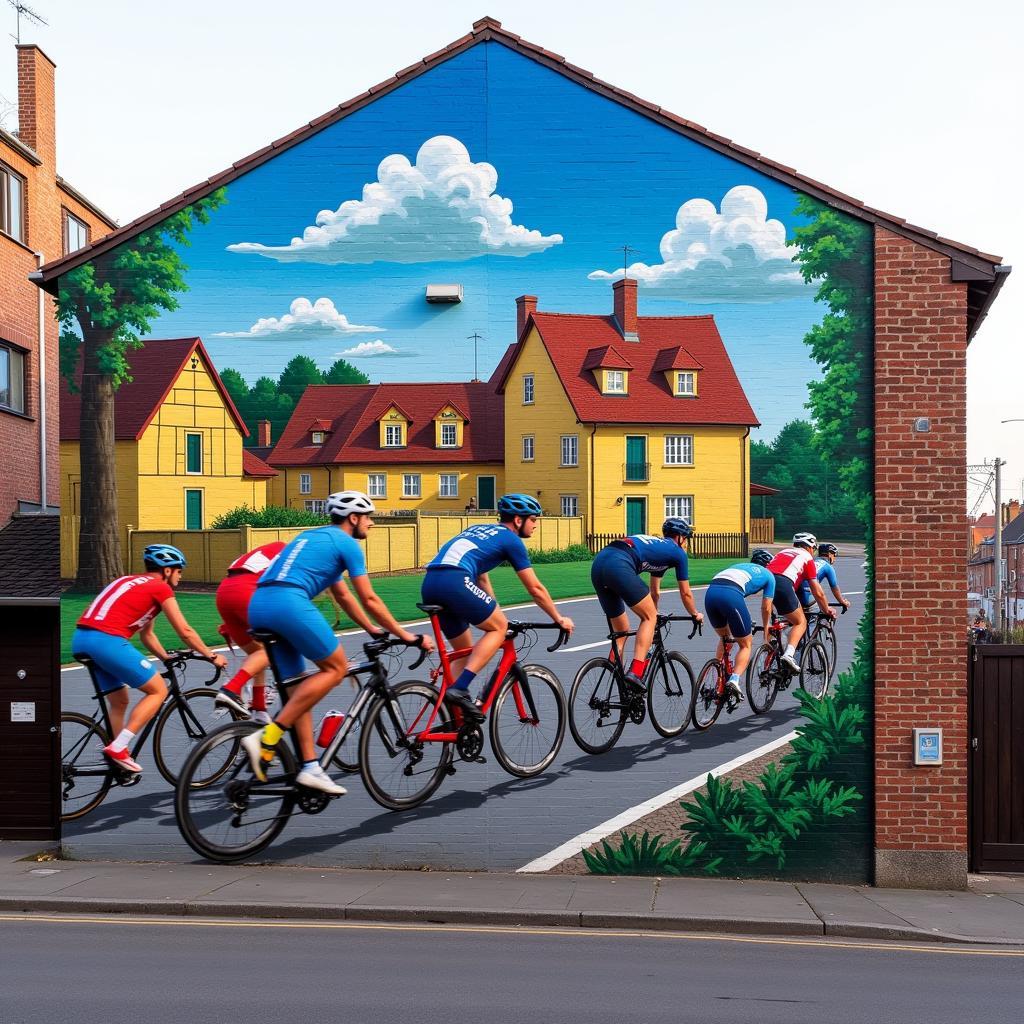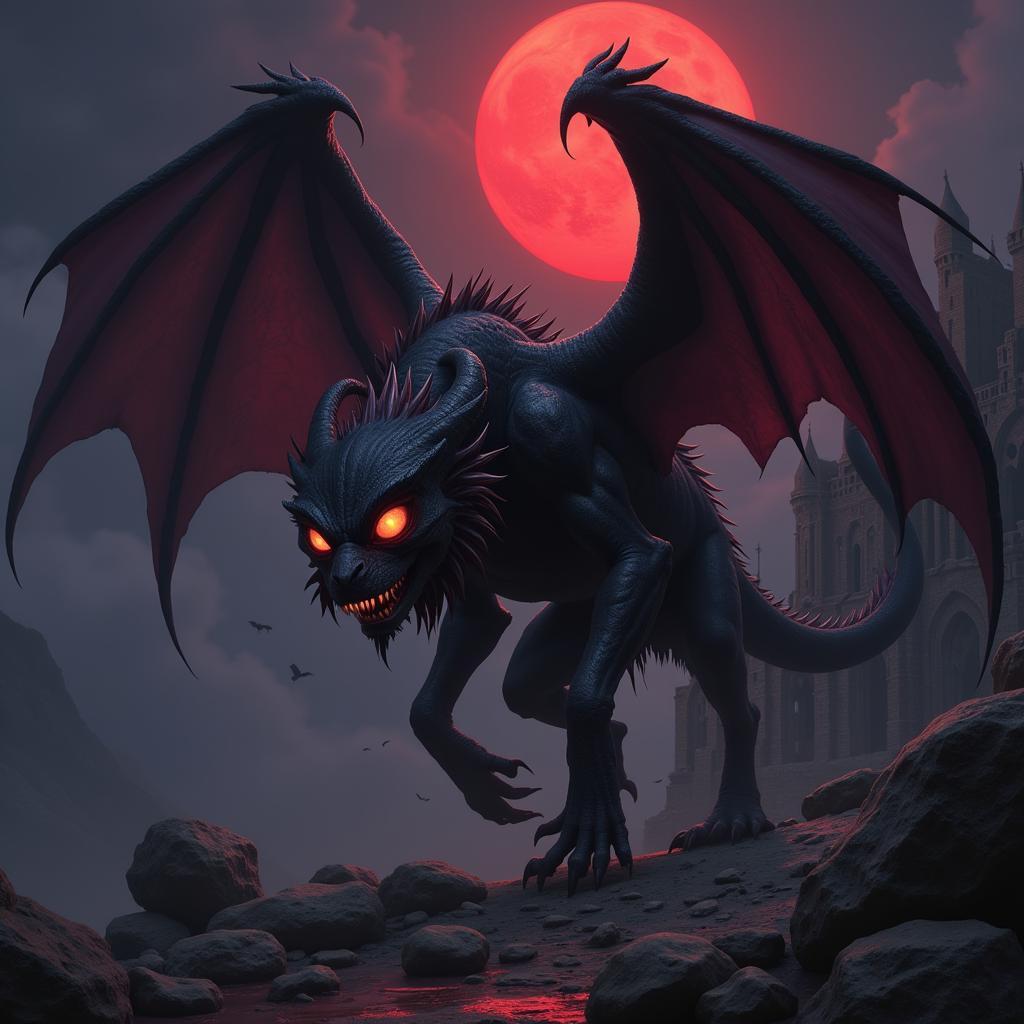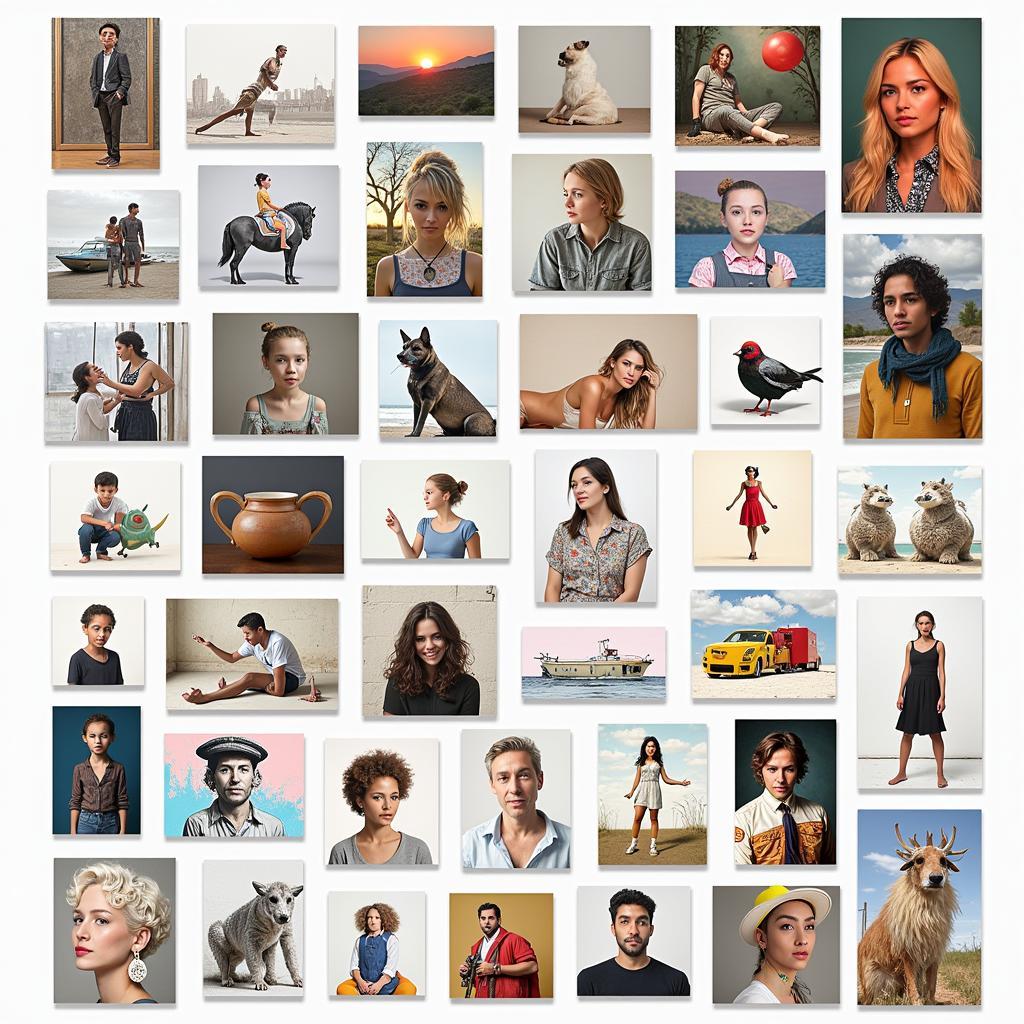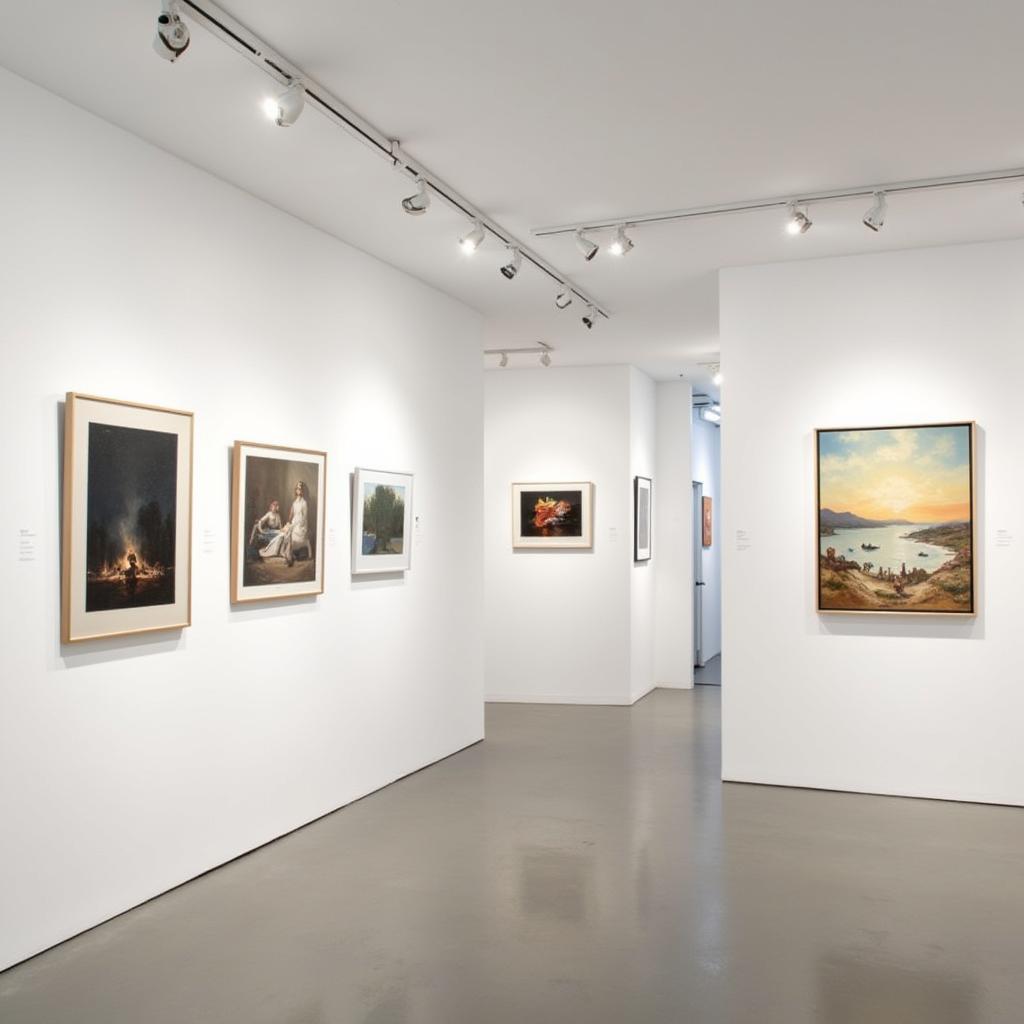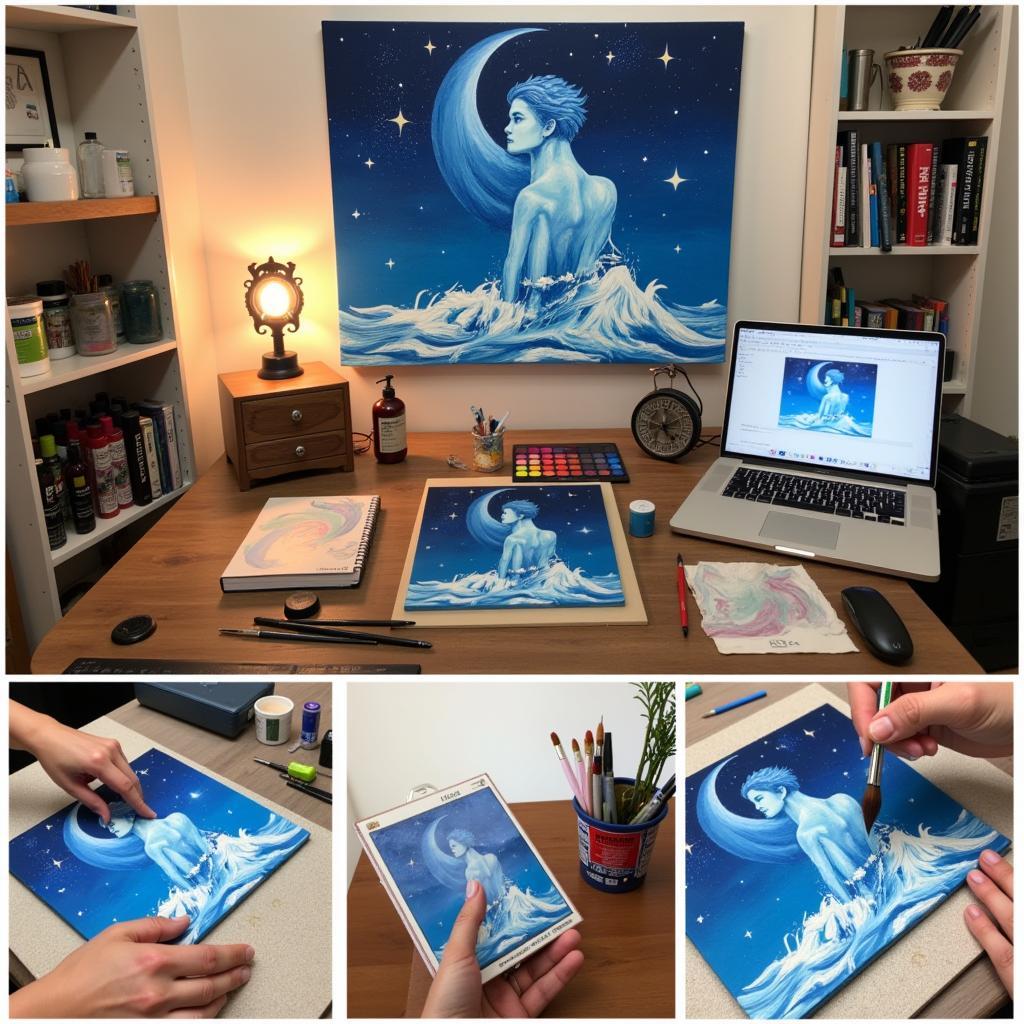Exploring the Power of Art with Red
Red, the color of passion, energy, and power, has captivated artists for centuries. From ancient cave paintings to modern digital art, the vibrancy of red has been used to evoke a wide range of emotions and create striking visual effects. This exploration delves into the diverse ways artists utilize red, examining its symbolic significance and its impact across various art forms. We’ll uncover the secrets behind using red effectively in your own creative endeavors, whether you’re a seasoned artist or just beginning your artistic journey. For artists looking to enhance their skills, check out our available colored pencil art kits.
The Psychology of Red in Art
Red is more than just a color; it’s a visceral experience. It grabs our attention, quickens our pulse, and speaks to our primal instincts. Its association with fire, blood, and love imbues it with a potent symbolism that resonates deeply within us. Think of the fiery intensity of a Rothko painting or the dramatic use of red in a Baroque masterpiece. These artists understood the inherent power of red and wielded it to create works that command attention and provoke thought. Why does red hold such power? Its psychological impact is undeniable, influencing our perceptions of everything from warmth and danger to love and aggression.
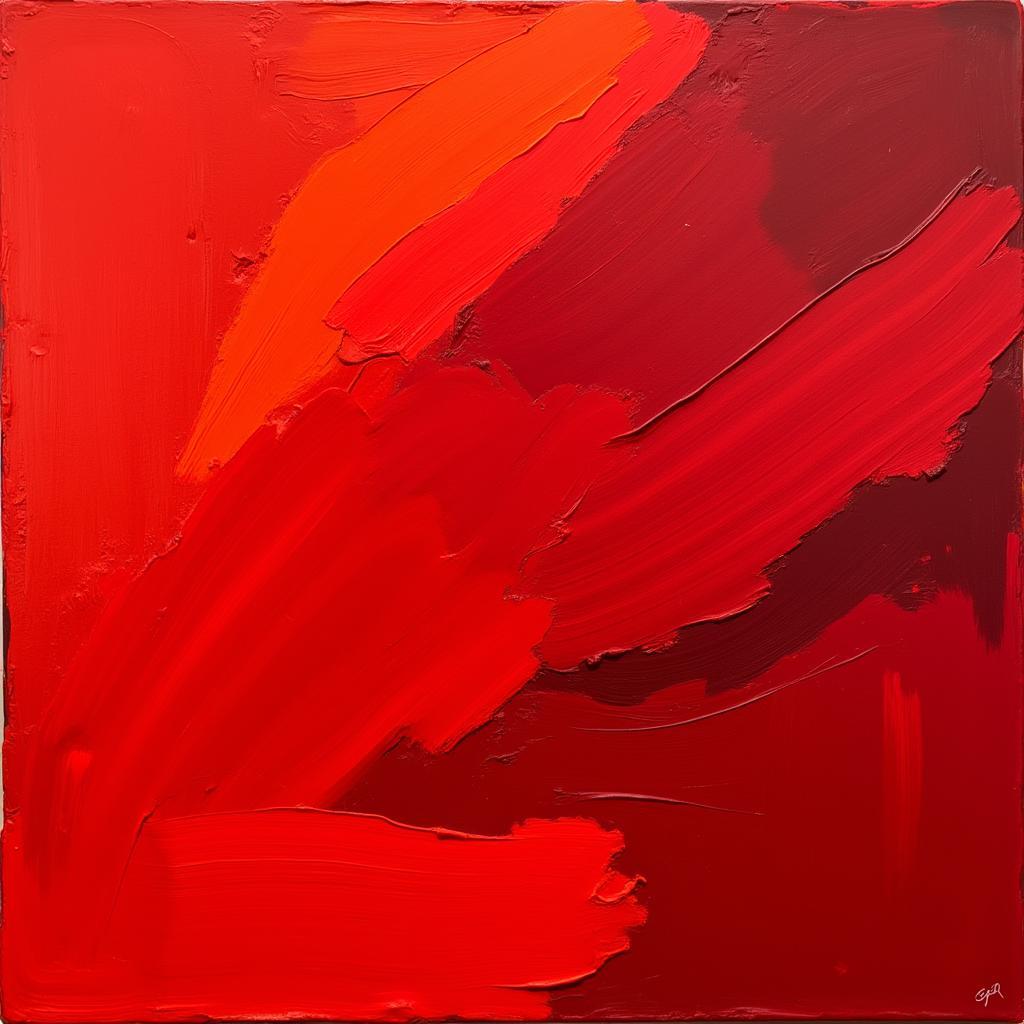 The Psychology of Red in Abstract Painting
The Psychology of Red in Abstract Painting
Mastering the Use of Red: Tips and Techniques
How can you harness the power of red in your own art? Understanding its various shades and how they interact with other colors is crucial. From the boldness of crimson to the warmth of scarlet, each shade of red offers a unique expressive potential. Experimenting with different mediums also plays a significant role. Red behaves differently in watercolor compared to oil paint, for instance. Learning to control these nuances allows you to achieve the desired effect, whether it’s a subtle blush or a dramatic splash of color. Consider exploring art with a red background to understand how the color interacts with its surroundings.
Red in Different Art Forms: A Journey Through History
Red’s influence transcends mediums and historical periods. In ancient cultures, red pigments derived from ochre were used to create cave paintings depicting animals and hunting scenes. Later, in the Renaissance, artists like Titian employed rich reds to depict opulent fabrics and evoke a sense of grandeur. Moving into the 20th century, we see artists like Matisse using red in bold, expressive ways, pushing the boundaries of traditional representation. Even in contemporary digital art, red continues to be a prominent force, employed to create stunning visuals and evoke powerful emotions. Mike Allred’s art exemplifies the continued relevance of red in contemporary art.
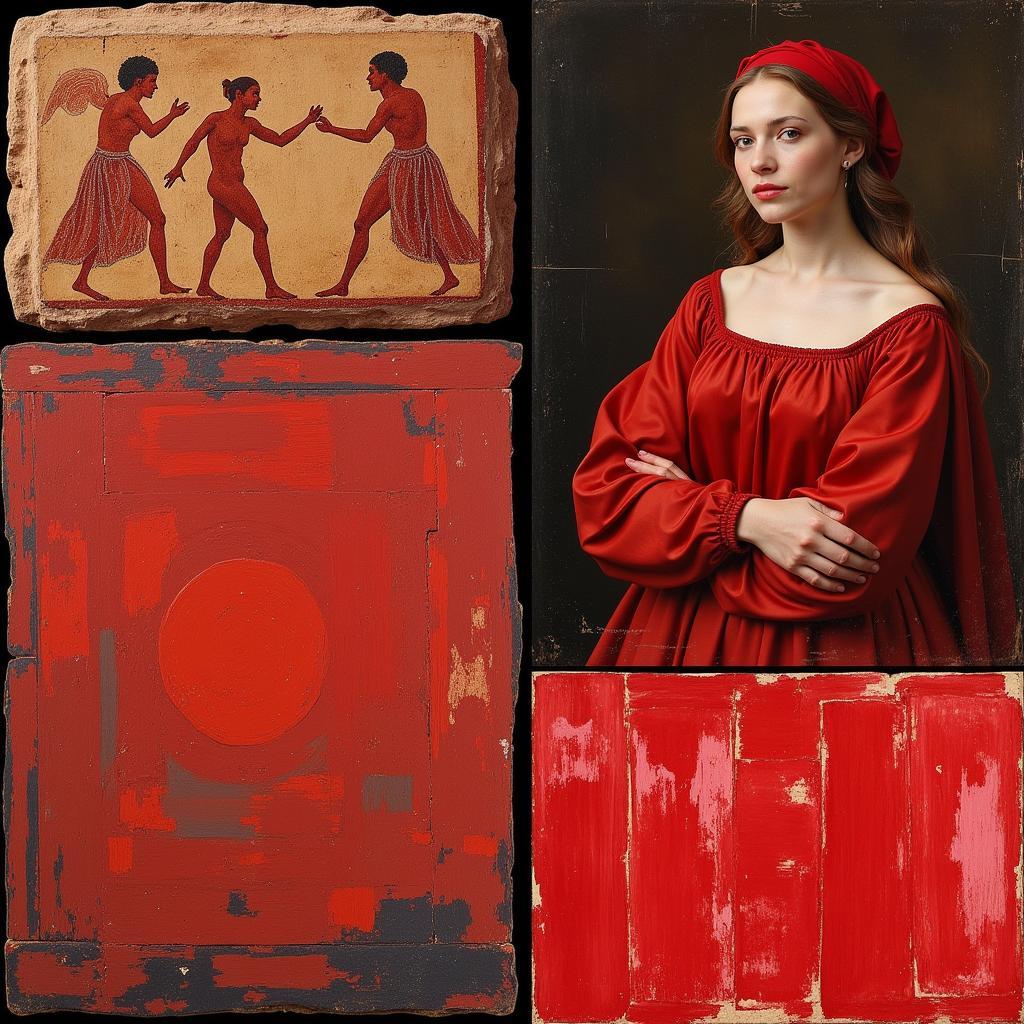 Red Pigments in Art Throughout History
Red Pigments in Art Throughout History
What are the Common Challenges Artists Face When Working with Red?
One common challenge is achieving balance. Red can easily overpower other colors, so careful consideration is needed when incorporating it into a composition. Another difficulty lies in controlling its intensity. Too much red can be overwhelming, while too little can be underwhelming. Finding the right balance is key.
How Can Red Be Used to Create Different Moods and Atmospheres in Art?
Red’s versatility allows it to evoke a wide spectrum of moods. Deep, rich reds can create a sense of luxury and sophistication, while bright, fiery reds can convey passion and excitement. Muted reds can evoke feelings of nostalgia or melancholy. The artist’s skill lies in manipulating these shades to achieve the desired emotional impact.
 Using Red to Evoke Different Moods in Art
Using Red to Evoke Different Moods in Art
What are Some Famous Examples of Art that Feature Red Prominently?
Many iconic works of art showcase the power of red. “The Scream” by Edvard Munch utilizes red in the background to heighten the sense of anxiety and terror. Mark Rothko’s color field paintings explore the emotional resonance of red in abstract compositions. And, of course, Titian’s “Assumption of the Virgin” uses red to convey divine power and glory. For baseball fans, Orioles art often features the team’s vibrant orange and red color scheme.
Conclusion
Red, a color of unparalleled vibrancy and symbolic weight, continues to fascinate and inspire artists across various disciplines. By understanding its psychological impact and mastering the techniques for its application, artists can unlock its expressive potential and create truly captivating works of Art With Red.
FAQ
-
What is the symbolic meaning of red in art?
Red often symbolizes passion, energy, danger, and love. -
How can I prevent red from overpowering other colors in my art?
Careful balancing and considered placement are key to preventing red from dominating the composition. -
What are some different shades of red used in art?
Crimson, scarlet, vermillion, carmine, and ruby are just a few examples. -
How does the medium affect the appearance of red in art?
Red behaves differently in watercolor, oil paint, acrylic, and other mediums, impacting its final appearance. -
What are some historical examples of the use of red in art?
Cave paintings, Renaissance portraits, and Impressionist landscapes all demonstrate the diverse use of red throughout history. -
How can I learn more about using red effectively in my art?
Experimentation and studying the work of master artists are excellent ways to enhance your understanding of red.
Need assistance? Contact us 24/7 at Phone: 02462573573, Email: [email protected] or visit us at Savico Megamall, 7-9 Đ. Nguyễn Văn Linh, Gia Thụy, Long Biên, Hà Nội 10000, Việt Nam.
